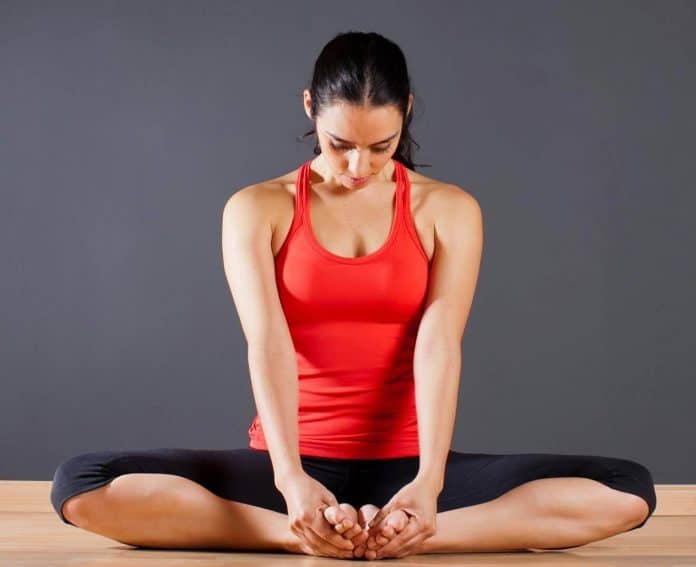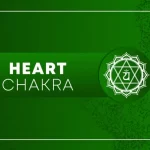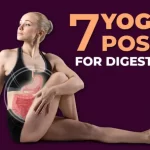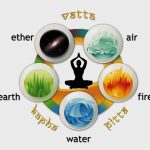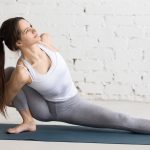A common seated meditation pose is called Baddha Konasana. It’s one of the best hip-opening postures for releasing energy blockages in the lower body.
| Sanskrit | Baddha Konasana |
| Pronunciation | BAH-dah-cone-AHS-ana |
| Common | Bound Angle Pose, Bhadrasana, Cobbler Pose, Butterfly Pose, Throne Pose |
| Type | Seated |
| Level | Beginner |
| Stretches | Knee, Inner Thigh, Quadriceps, Groin, Hips, Lower Back, Ankles |
| Strengthens | Core, Pelvic floor, Psocas muscles, Spine, Shoulders |
In some texts, you’ll find this pose under the name of ‘Bhadrasana – gracious pose‘ but feet placement and arrangement in both poses are completely different. The similarity is just these are both sitting yoga poses.
In the case of Beginners seeking meditation practice, Baddha Konasana is very easy because of its anatomical simplicity
Meaning
To bind the legs at an angle in Baddha Konasana, hands are wrapped around the toes. This way, it might be explained as “Bound Angle Position,” where “Baddha” stands for “bound” or “restrained,” “Kona” for “angle,” and “asana” for “pose.”
When fixing shoes, cobblers in India have been observed sitting in the Baddhakonasana pose. As a result, it is also known as the cobbler’s stance.
This stance can be changed slightly to become a butterfly pose by bending the legs upside-down and backward.
Baddha Konasana is frequently cited in the Hatha Yoga Pradipika, a yogic treatise from the fifteenth century.
Baddha Konasana Practice Guide
Simply practicing it by going down a cue’s steps will help.
Precaution & Contraindication
- Baddha Konasana should not be performed by practitioners who have a history of groin and knee injuries since it may make their pain worse. However, the main impact of asana is on these areas.
- This pose should be avoided by ladies who are on their periods during this time. There could be problems with the periodic cycle as a result.
- It is not suggested for people with sensitive sciatic nerves to perform advanced Baddha Konasana, although they can go mild. Because advanced Baddha Konasana may cause the sciatic nerve’s compression-related pain to worsen.
Preparatory Pose
- Easy Pose (Sukhasana)
- Butterfly Pose (Titali asana)
- Reclining Hand-to-Big-Toe Pose (Supta Padagusthana)
- Hero Pose (Virasana)
Baddha Konasana Steps
- Start by assuming a Dandasana position over the mat. The legs and back should be straight. Unwind and locate your position here.
- Now, slowly flex your knees and bring your heel toward your pelvis. Attempt to bend your knees so that they are firmly touching the ground.
- From here, grab your toes with your thumb, middle, and index finger to bring your heel as close to your pelvis as you can. Keep in mind to regulate distance as your hip opening requires and avoid forcing the heel.
- To push their heel closer to their pelvis, beginners can try the ankle and shin options.
- Additionally, adjust your posture such that your tailbone and pubis remain at the same height off the ground. Your perineum should be parallel to the floor, and your pelvis should be in a neutral position.
- From the top of the sternum down, lengthen your body while keeping your back straight. Firm your sacrum and shoulder blades. The posture will then receive the finishing touch as a result.
- Never attempt to force your knees to the floor, always keep that in mind. The head of the thigh bone can be pushed, which will bring the knees down safely. However, consistency in practice will create ease.
- Hold the position for 5 to 10 minutes, or for however long is comfortable, while taking deep breaths in and out.
Props & Modification
- When sitting flat on the floor, newly enrolled practitioners experience rounding of the lower back.
- After wanting some height in the posture, a folded blanket under the sit bone helps them.
- Knees have a difficult time rising off the floor when the hamstrings are tight.
Therefore, after achieving maximal stretching, one should utilize a folded blanket or, if just starting, a block beneath the thighs. Apply 10 to 15 pounds of weight (or more, depending on the situation) to the inner groins. - One can lean against a wall for support if their back isn’t strong enough to maintain their position for the allotted time.
Follow up Pose
- Tree Pose (vrikshasana)
- Any forward and twisted pose can be done.
Variations
Following are the variations of Baddh Konasana
1. Supta Baddha konasana
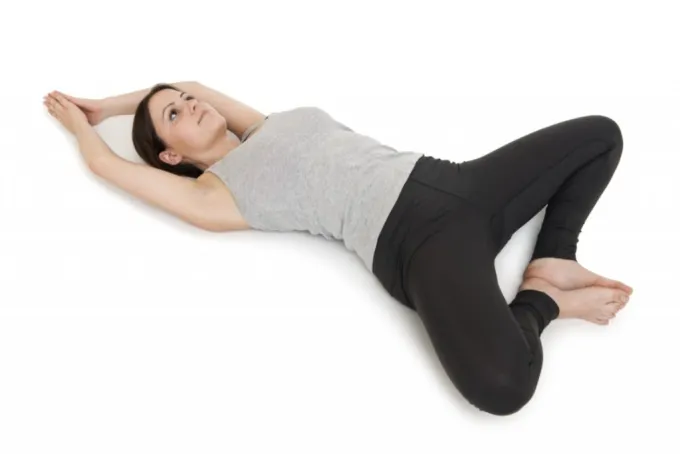
- In Baddha Konasana, exhale while bending your back and placing your torso flat on the floor. Bringing the feet together, touch the outside heels of one another. Try to bring your feet closer to your pelvis.
- Their back pressed into the floor, as did their side palms. Once you’ve exhaled, watch for abdominal contractions as your tailbone approaches the pubic bone.
- Use your hand to lengthen your lower back while keeping your spine stable and your pelvis tilted. Hold this position. After inhaling and exhaling, slowly open the knee and feel your inner thighs and groins stretch.
- Spend a few minutes there, breathe out, and then leave after giving your lower back and knees one last stretch on the floor. Roll to one side, then firmly raise off your back trunk, and finally lower.
Prop & Modification
The tightened hamstring could make it difficult to perform the Supta Baddha Konasana’s final stretch. Therefore, practitioners with such circumstances might support the thighs or side knees using a Bolder to gradually open or loosen the inner thighs.
The inability to hold the knees hung for an extended period of time may also be caused by underdeveloped core muscles. A strap would therefore be quite beneficial to those practitioners.
2. Ardha Baddha konasana
- With your left leg extended to the side and your right leg pressed up against the left inner thigh, start in Baddha Konasana. Flexed left toe position.
- After inhaling, raise your arms upward with your spine remaining straight. Lean forward now. Take your hands as far forward as you can. Any object to grab can be placed, even bolder.
- Maintain your position as long as it is comfortable. To feel the suppleness in the muscles of the inner thigh, groin, pelvis, hips, etc., practice for 5 to 10 minutes on a daily basis.
Baddha Konasana Benefits
- Baddha Konasana is one of the best prenatal yoga postures. It helps in strengthening and lengthening the pelvis, which restores smooth delivery.
- This pose’s upward and downward movement enhances blood flow to the reproductive system. Sex cells are subsequently activated, releasing sex hormones that control both young people’s and adults’ sexual health.
- Enhanced blood flow provides a nourishing effect over the prostate [efn_note] A CONCEPTUAL STUDY ON SCIENTIFIC ANATOMICAL APPROACH TOWARDS YOGA AASANA http://ayurpub.com/wp-content/uploads/2018/06/907-915.pdf [/efn_note] and kidneys including other excretory organs. Therefore, improves functioning and restores health.
- Holding this pose encourages the range of motion in the muscles and joints as well. It aids in increasing flexibility. [efn note] Study of Hatha yoga’s asanas’ effects on the body’s flexibility and coordination http://www.kheljournal.com/archives/2016/vol3issue5/PartA/3-6-4-366.pdf [/efn_note] of the inner thigh, hip abductor, pelvic mobility, etc.
- While seated in Baddha Kona asana, deep breathing helps the respiratory system supply enough oxygen. This further relaxes the tense muscles, pauses breathing, decreases heartbeat, and raises blood pressure. By virtue of its ultimately calming and soothing impact, it lowers tension and anxiety.
- Increased vital capacity can help with breathing by allowing for longer breaths in Baddha Konasana.
- Pain is the worst symptom of sciatic nerve compression, followed by numbness, tingling, and weakening. Regular use of this asana relieves symptoms by giving the sciatic nerve’s control region a deep stretch.
- The digestive organ is massaged by increased blood flow to the abdominal areas and knee movements that resemble butterfly motions. As a result, the metabolism is increased and the digestion is active.
- While performing this asana, using Nasikagra Drishti aids in increasing attention and concentration.
















